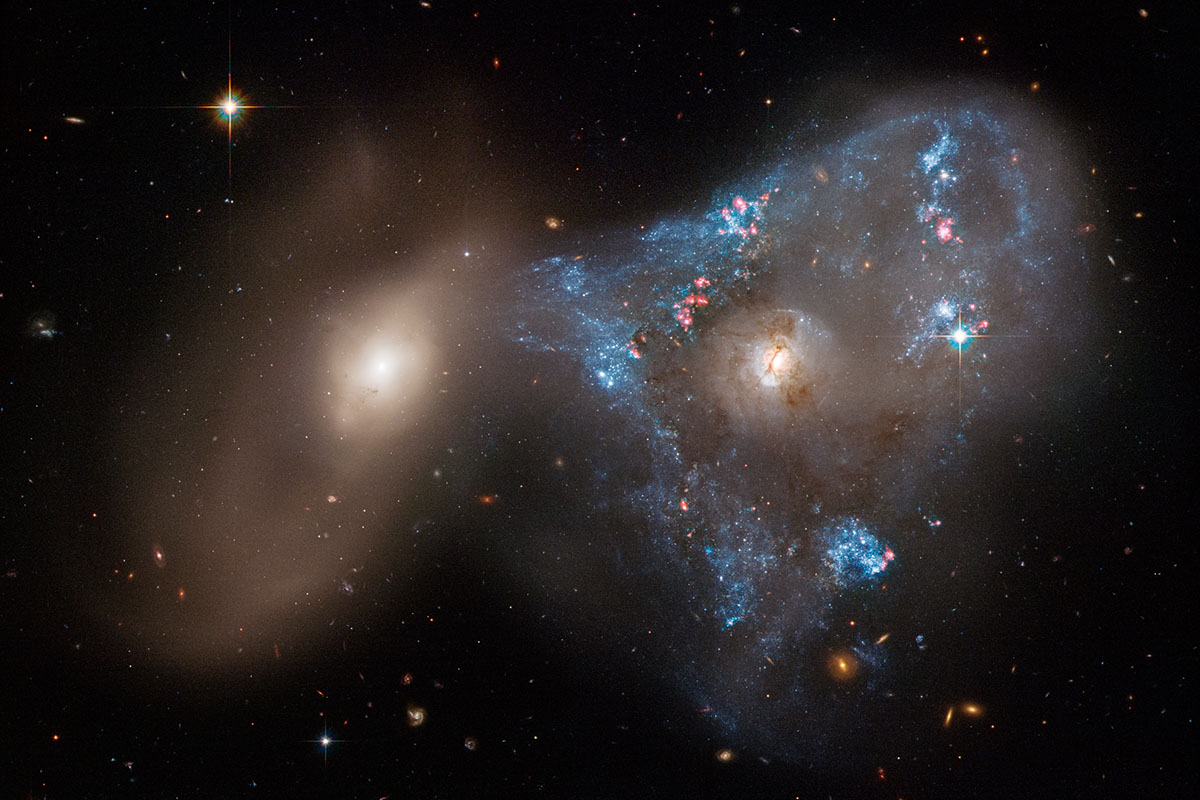STScI: Galaxy Collision Creates ‘Space Triangle’ in New Hubble Image

A spectacular head-on collision between two galaxies fueled the unusual triangular-shaped star-birthing frenzy, as captured in a new image from NASA’s Hubble Space Telescope. The interacting galaxy duo is collectively called Arp 143. The pair contains the glittery, distorted, star-forming spiral galaxy NGC 2445 at right, along with its less flashy companion, NGC 2444 at left.
Astronomers suggest that the galaxies passed through each other, igniting the uniquely shaped star-formation firestorm in NGC 2445, where thousands of stars are bursting to life on the right-hand side of the image. This galaxy is awash in starbirth because it is rich in gas, the fuel that makes stars. However, it hasn’t yet escaped the gravitational clutches of its partner NGC 2444, shown on the left side of the image. The pair is waging a cosmic tug-of-war, which NGC 2444 appears to be winning. The galaxy has pulled gas from NGC 2445, forming the oddball triangle of newly minted stars.
“Simulations show that head-on collisions between two galaxies is one way of making rings of new stars,” said astronomer Julianne Dalcanton of the Flatiron Institute’s Center for Computational Astrophysics in New York and the University of Washington in Seattle. “Therefore, rings of star formation are not uncommon. However, what’s weird about this system is that it’s a triangle of star formation. Part of the reason for that shape is that these galaxies are still so close to each other and NGC 2444 is still holding on to the other galaxy gravitationally. NGC 2444 may also have an invisible, hot halo of gas that could help to pull NGC 2445’s gas away from its nucleus. So, they’re not completely free of each other yet and their unusual interaction is distorting the ring into this triangle.”
NGC 2444 is also responsible for yanking taffy-like strands of gas from its partner, stoking the streamers of young, blue stars that appear to form a bridge between the two galaxies.
These streamers are among the first in what appears to be a wave of star formation that started on NGC 2445’s outskirts and continued inward. Researchers estimate the streamer stars were born between about 50 million and 100 million years ago. But these infant stars are being left behind as NGC 2445 continues to pull slowly away from NGC 2444.
Stars no older than 1 million to 2 million years are forming closer to the center of NGC 2445. Hubble’s keen sharpness reveals some individual stars. They are the brightest and most massive in the galaxy. Most of the brilliant blue clumps are groupings of stars. The pink blobs are giant, young star clusters still enshrouded in dust and gas.
